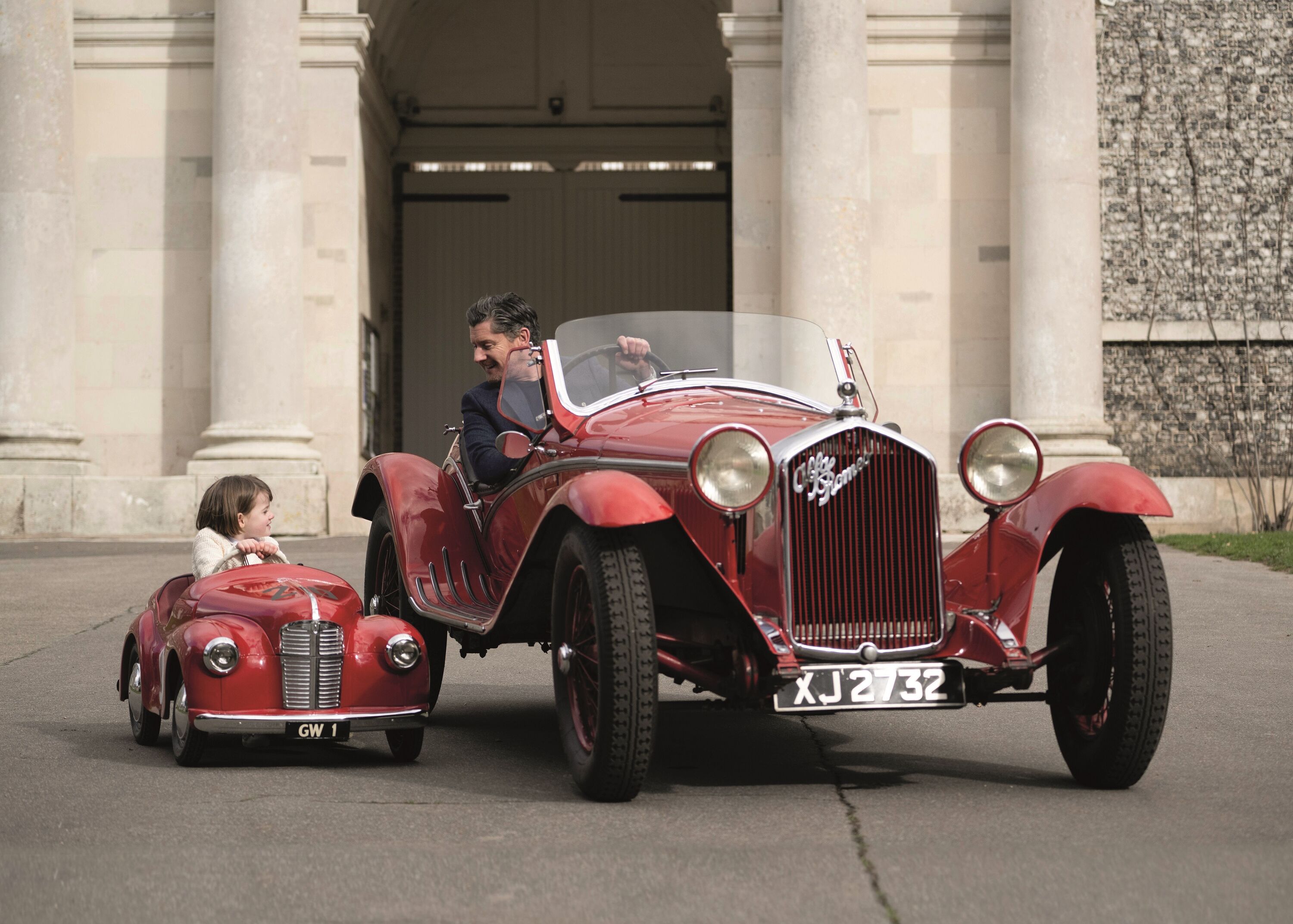Why the 1,250PS Czinger 21C isn’t just another hypercar
At the very start of 2020 it looked as though yet another pie-in-the-sky hypercar company was due to unveil its first car. You know the sort: super-expensive, super-powerful, super-exclusive, super-fast, but after a few months of noise with a mad looking show car and a deposit book filled to bursting, there would be silence. But when it arrived, it seemed that this company, however, was doing things a little differently. There’s a working, homologated car, and it’s about the drive and not just the numbers. That car is the Czinger 21C.

The Czinger 21C is the brainchild of Kevin Czinger. Once an Executive Director of Goldman Sachs and something of a serial entrepreneur (Kevin co-founded an electric car company called Coda Automotive that ultimately failed to get off the ground a decade ago), Czinger has turned his attention to a new project, that of building a supercar that can equal or better the likes of Ferrari, McLaren, Lamborghini, Koenigsegg or Pagani. To do so Czinger needed a team, and so Kevin grabbed Jon Gunner, formerly the technical director of Koenigsegg for more than a decade (before that he worked for Saab Aerospace, Saab cars and on the Ford GT in the mid-noughties), David O’Connell, formerly a designer with Peugeot, Citroën and Mitsubishi, and Jens Sverdrup, an automotive consultant who’s worked with BAC, Koenigsegg, Rimac and more. It’s Jens Sverdrup, Czinger’s Chief Commercial Officer, we enjoyed a lengthy conversation with, trying to get a grasp of what the Czinger 21C is all about, what the company has done differently to other supercar start-ups and how it all began.

When you've worked so hard to get the car ready, why not put it on show anyway? Jens Sverdrup at the cancelled 2020 Geneva Motor Show with the Czinger 21C.
“I got a phone call about four years ago,” Sverdrup explains. “My colleague Jon Gunner, who’s the chief technical officer for Czinger, I worked with him at Koenigsegg – he was the CTO for Koenigsegg for 12 years, from the CCX all the way up to the Jesko, basically. He went over [to Czinger] and I remember him saying ‘this is a once in a lifetime opportunity to really change the world and be part of something really, really new’. That’s when it started. Although I got this job a little over a year ago. That was a dream come true.
“But I said three or four years ago ‘please, have the car developed – don’t be just another hypercar brand that launches a mock up or some renderings and tries to get deposits. Try to develop this car where it’s a real credible thing that performs.’ And that’s what they did. So about a year ago I was given the green light – the car was ready, there were prototypes running, and I couldn’t believe it. It was a dream come true, to be finally able to launch something and not be fishing around for deposits, because it’s been paid for up front already.”
That is one of the big talking points for Czinger. Deposits haven’t funded the project, rather the money has come from Kevin Czinger himself, as well as a handful of other individuals and companies. “Depending on how you count the money we’re around $150-200m into development with this car,” Sverdrup says. As a result there are a number of working development cars with thousands of miles on the clock. The 21C “isn’t finished finished, it’s not polished yet,” Sverdrup continues. “But these performance numbers, they’re not taken out of the blue, they’re taken out of reality. We already know what the car is capable of, we just don’t know how much more it’s capable of.”

The performance numbers Sverdrup alludes to are impressive, to put it mildly. There’s 1,250PS (919kW) courtesy of a mid-mounted 2.9-litre, flat-plane crank V8 and two electric motors, each powering one of the front wheels. The powertrain, combined with a dry kerb weight of less than 1,200kg, means a 0-62mph time of 1.9 seconds, 0-186mph in 15 seconds and 0-248mph in 25 seconds.
“We know the numbers we’ve stated and we’re extremely certain of them,” says Sverdrup. “And they’re conservative. We still have a lot of testing to do, some lap times to set, but we’re not wasting any money on marketing – we’re spending the money on making the car perform. It’s not a luxury product, it’s a driving instrument for the drivers.”
It isn’t just the performance stats that are impressive but it’s the way the Czinger 21C will be manufactured that excites Sverdrup, even though the exact details aren’t entirely clear.
“It’s an extremely efficient way of manufacturing,” he adds. “Today we’re not 100 per cent carbon neutral, but we will be once we have new facilities and everything.
“You use a small footprint, you only use the material you need to use, all of the materials can be recycled – like truly recycled – and you use very little power to do it. Today it’s not all solar powered and all of those things, but it will be in the future. But today, if you visited the factory, you’d be blown away about how efficiently it’s all done, how clean everything is, how little footprint we need to manufacture cars, and how little material we need, because that's a big part of it. Only use what you need to use, and make sure you can reuse it.”
Like Koenigsegg, Czinger won’t be sticking with traditional tooling manufacturing methods at the company’s facility in Los Angeles, Sverdrup details: “In terms of how volume cars are built, it’s big heavy machinery, very power consuming, using tooling to stamp steel structures, and that’s like over 100 years old now, you know? It just creates this thing where you have to create high volume because it’s expensive, and you have to keep the shifts running. With our technology, you can have relatively high production numbers built to order, you can adjust the volumes up and down easily without having to think of two shifts or three shifts or whatever.”
The other big talking point, and something Sverdrup is quite adamant about, is that the 21C will not be another extreme-power supercar where the performance cannot be accessed without a track. When there’s so much talk about making cars lighter and that some supercars are becoming too focussed on the numbers to enjoy at road speeds, Czinger wants to take things the other way, even with raw performance stats that are absolutely ridiculous on paper. The key to that is weight.
“I’ve always enjoyed driving a lightweight car,” says Sverdrup. “I haven’t driven a lightweight car that I haven’t enjoyed yet, whether it’s a Peugeot 205 or any Lotus or whatever it is. So to reverse that trend lately of cars getting heavier and heavier, and with more and more and more horsepower, that’s important, although it probably isn’t the most sexy thing!
“I think anyone who’s really into driving will relate to it, because you have steering feel and responsiveness – everything comes alive, everything becomes so much more in tune and precise. So forget the horsepower – although that’s a fantastic thing, of course, like being strapped to a rocket. This car is fun to drive slowly, on a country road in Wales or Scotland. That’s important. A Chiron, or any of these cars, they’re hugely capable but they’re not that fun to drive on a narrow country lane in Wales doing 60mph, but a lightweight, small car is.”
There will be 80 21Cs, most road orientated, some with more of a track focus. Beyond that, Sverdrup promises, there will be new models: “We have several more models coming. I don’t want to say too much. We’re obviously going to be in the high-end performance category, but we’re not a hypercar brand. We’re about extreme innovation, an extreme focus on performance and driving, and a beautiful attention to detail – it’s going to look like a Swiss watch inside. It’s a shame to put a body on it.
“If you buy a Patek Phillipe you don’t always see the internals, you just know that if you take the lid off and have a look inside that watch you just know it’s perfect inside. The attention to detail is more than skin deep. We have a highly mechanical object, mechanical art, and it revs to 11,000rpm, and it might be even more in the upgraded versions to come – it sounds a bit like an old Formula 1 car.”
Key to the company’s future success is being compared alongside the very best, according to Sverdrup. “We have around 10 dealers at the moment and should have around 20 by the end of the year – and they’re not standalone showrooms.
“I want to be compared to Bugatti and Koenigsegg and Pagani because we’ve got everything to win by being compared. As long as you make something that’s very good you have everything to win. If you have an inferior product, then you have a problem. Most dealers we have have several brands under one roof. It’s great for the customer because the salespeople are there to advise you not to sell you whatever they want to sell you, because they have everything anyway. So they can be advisers rather than sales people.
“No one needs cars like this, they just need to figure out what’s right for them. That’s why what happened with the Geneva Motor Show was such a big blow for us, because Ferrari and McLaren are already established and they can get away with some live streams or whatever. But we wanted to be there to prove ourselves, to have people jumping between the stands comparing us to the best in the business because we’re very confident our car is up there.”

The price? A cool $1.7 million in the US, or around “$1.85 million [£1.42m) depending on the transport plus import duties and VAT” by the time it gets to the UK. A fair price, but if the 21C has the performance and is as fun to drive at normal speeds as Sverdrup promises, it’ll be world-beater, won’t it? That being said, there is one other company that’s about to launch a new lightweight supercar with incredible performance: Gordon Murray Automotive with the T.50.
Regardless, for a man who started his career as a musician before buying a few old cars with his savings, working on them and selling them on, and then becoming a consultant and now Czinger’s CCO, the future is very exciting:
“I worked as a teacher, doing paid [music] gigs that I didn’t appreciate, like on ferry crossings, for really drunk people or at clubs or Christmas parties – I’d rehearse for ten hours a day and no one cared. That really depressed me – it’s like you’d made the perfect product that no one needs!
“[Now] I believe in this, both as a car brand as a technology brand,” Sverdrup adds. “I’m really excited.”
Czinger
21C
Koenigsegg
Pagani
Bugatti
Rimac
BAC
Jens Sverdrup
Interview



































































